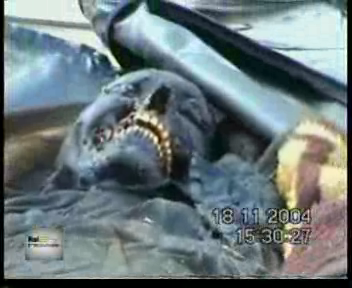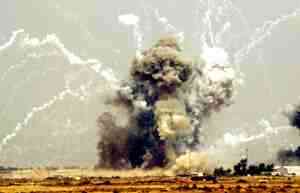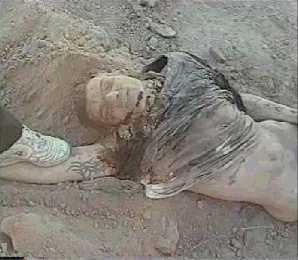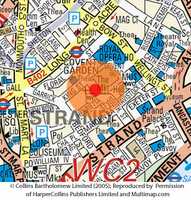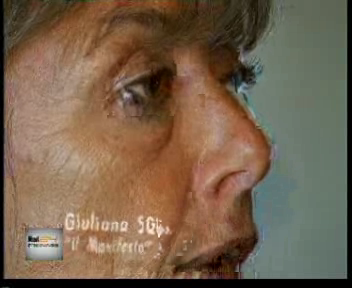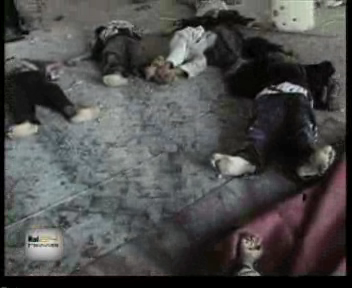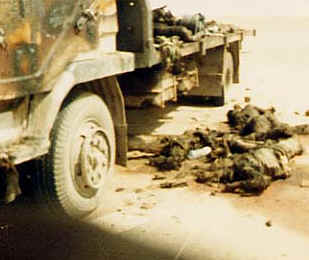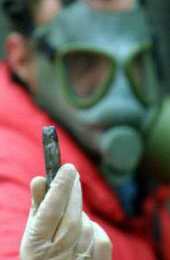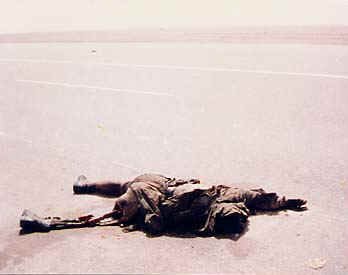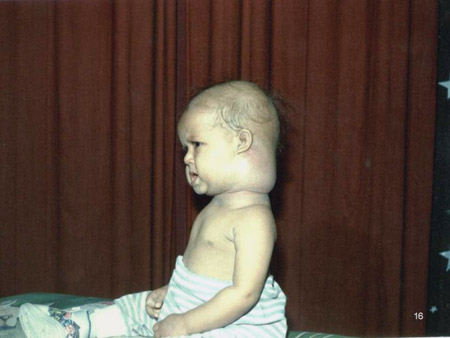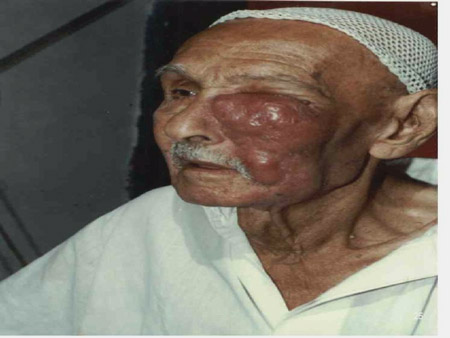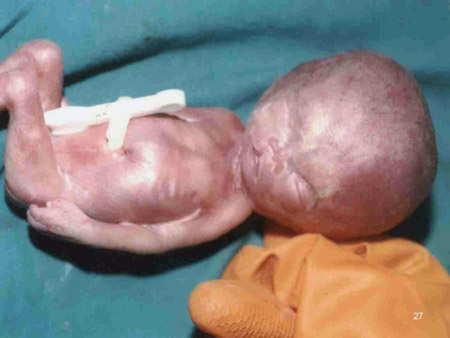|
Just how many civilians died in Iraq???
7 thousand???
10
thousand? 37 thousand???
...while 20 thousand are wounded and ignored...
It was over 1.5 million BEFORE the so called war !!!
(check the date on the report)
What the US didn't want you to see- the leaked missing pages
from the UN document on IRAQ
WMD's
the timeline-which liars knew what, and when...
|
How many are really dead?
The most common cause of death is as a direct result of violence, mostly caused by coalition air strikes, reveals the study of almost 1000 households scattered across Iraq. And the risk of violent death just after the invasion was 58 times greater than before the war. The overall risk of death was 1.5 times more after the invasion than before.
The figure of 100,000 estimated by extrapolating the surveyed households death toll to the whole population - is based on "conservative assumptions", notes Les Roberts at Johns Hopkins Bloomberg School of Public Health, Baltimore, US, who led the study.
That estimate excludes Falluja, a hotspot for violence. If the data from this town is included, the study points to about 200,000 excess deaths since the outbreak of war. - NewScientist
|
How easy it is to go to war...
Well, that's what they tell you it was a war...
In reality ...It was a TURKEYSHOOT...
A Nation Starved through sanctions for years against the
biggest MILITARY-INDUSTRIAL complex the world has ever seen...
The falsehoods of war...[US]
an official finding [ $ ]
of an
excuse for occupation?
Why are these unembedded reporters being silenced?
|
Journalist killed after investigating US-backed death squads in Iraq
On June 24, Yasser Salihee, an Iraqi special correspondent for the news agency Knight Ridder, was killed by a single bullet to the head as he approached a checkpoint that had been thrown up near his home in western Baghdad by US and Iraqi troops. It is believed that the shot was fired by an American sniper. According to eyewitnesses, no warning shots were fired.
The US military has announced it is conducting an investigation into Salihee's killing. Knight Ridder has already declared, however, that "there's no reason to think that the shooting had anything to do with his reporting work". In fact, his last assignment gives reason to suspect that it was.
Over the past month, Salihee had been gathering evidence that US-backed Iraqi forces have been carrying out extra-judicial killings of alleged members and supporters of the anti-occupation resistance. His investigation followed a feature in the New York Times magazine in May, detailing how the US military had modeled the Iraqi interior ministry police commandos, known as the Wolf Brigade, on the death squads unleashed in the 1980s to crush the left-wing insurgency in El Salvador.
The Wolf Brigade was recruited by US operatives and the US-installed interim government headed by Iyad Allawi during 2004. A majority of its officers and personnel served in Saddam Hussein's special forces and Republican Guard-veterans of killings, torture and repression. The unit has been used against the resistance in rebellious cities such as Mosul and Samarra, and, over the past six weeks, has played a prominent role in the massive crackdown ordered by the Iraqi government in Baghdad codenamed "Operation Lightning".
death squads
|
2. Cluster Bombs
|
|
Cluster bombs have been widely used during conflicts in countries such as Kosovo, Vietnam, Afghanistan and Iraq. The results are devastating...
...If a cluster bomblet was dropped on Covent Garden... The red area shows an area of guaranteed fatalities The orange area shows an area of likely injuries
Handicap International UK is urging the public to show solidarity with victims of cluster bombs and support the campaign to Ban Cluster Bombs. Handicap International UK will create a giant Pyramid of Shoes in Covent Garden plaza on Friday 11th November to raise awareness of this issue. Since becoming the co-recipient of the 1997 Nobel Peace Prize for the International Campaign to Ban Landmines, Handicap International (HI) has also been at the forefront of international efforts to ban cluster bombs.
Catherine Deneuve and Juliette Binoche are among the celebrities supporting the campaign. Catherine Deneuve said: "During and after conflicts, cluster bombs kill and maim thousands of civilians with impunity. Say no to cluster bombs with Handicap International."
|
|
Cluster bombs are not a new scourge. HI has been working with affected communities in post conflict zones since the mid 1980s, but early versions of the weapon were also dropped in the UK during the Second World War. On November 11th at Covent Garden, we will also be remembering the people of Grimsby who were affected by these bombs, through an exhibition and testimonies from survivors.
The Pyramid of Shoes and related activities will run from 9am to 5pm. Members of the public will be asked to bring a pair of shoes to donate and will have the opportunity to sign a petition.
* The Pyramid will consist of donated shoes, each symbolising a life or limb lost through accidental bomb blasts. * There will be a mine clearance area in which experts will demonstrate the extraordinary skills and commitment required in their daily work dealing with unexploded cluster bombs and mines in countries all over the world. * Volunteers will be shining shoes for passers by, who will be asked to make a small donation to this cause. * Children's activities and educational games will take place in St Paul's Churchyard.
Cluster bombs are unpredictable weapons. They have a wide 'footprint' when dropped or launched. The smaller 'bomblets' have a high failure rate and pose a threat to civilians long after a conflict is over. Cluster bombs are manufactured, stockpiled and used by the UK.
Cluster bombs have been used in at least 20 countries during conflicts in the last 40 years. Containing up to several hundred can-sized bomblets, a single bomb can spread bomblets over an area at least the size of several football pitches. Just one bomblet dropped on Covent Garden could injure anyone within the area coloured orange.
www.handicap-international.org.uk
|
3. 'Napalm'
firebombs used in Iraq
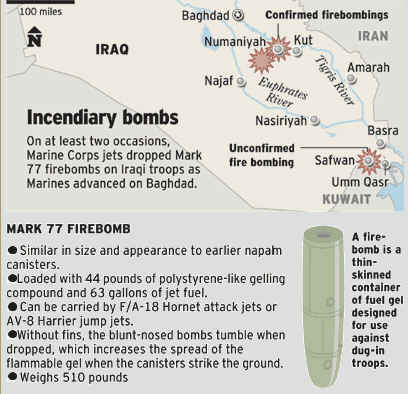 
|
US lied to Britain over use of napalm in Iraq war
17 June 2005 - American officials lied to British ministers over the use of "internationally reviled" napalm-type firebombs in Iraq.
Yesterday's disclosure led to calls by MPs for a full statement to the Commons and opened ministers to allegations that they held back the facts until after the general election. Despite persistent rumours of injuries among Iraqis consistent with the use of incendiary weapons such as napalm, Adam Ingram, the Defence minister, assured Labour MPs in January that US forces had not used a new generation of incendiary weapons, codenamed MK77, in Iraq.
But Mr Ingram admitted to the Labour MP Harry Cohen in a private letter obtained by The Independent that he had inadvertently misled Parliament because he had been misinformed by the US. "The US confirmed to my officials that they had not used MK77s in Iraq at any time and this was the basis of my response to you," he told Mr Cohen. "I regret to say that I have since discovered that this is not the case and must now correct the position."
Mr Ingram said 30 MK77 firebombs were used by the 1st Marine Expeditionary Force in the invasion of Iraq between 31 March and 2 April 2003. They were used against military targets "away from civilian targets", he said. This avoids breaching the 1980 Convention on Certain Conventional Weapons (CCW), which permits their use only against military targets.
Britain, which has no stockpiles of the weapons, ratified the convention, but the US did not.
The confirmation that US officials misled British ministers led to new questions last night about the value of the latest assurances by the US. Mr Cohen said there were rumours that the firebombs were used in the US assault on the insurgent stronghold in Fallujah last year, claims denied by the US. He is tabling more questions seeking assurances that the weapons were not used against civilians.
Mr Ingram did not explain why the US officials had misled him, but the US and British governments were accused of a cover-up. The Iraq Analysis Group, which campaigned against the war, said the US authorities only admitted the use of the weapons after the evidence from reporters had become irrefutable.
Mike Lewis, a spokesman for the group, said: "The US has used internationally reviled weapons that the UK refuses to use, and has then apparently lied to UK officials, showing how little weight the UK carries in influencing American policy."
He added: "Evidence that Mr Ingram had given false information to Parliament was publicly available months ago. He has waited until after the election to admit to it - a clear sign of the Government's embarrassment that they are doing nothing to restrain their own coalition partner in Iraq."
The US State Department website admitted in the run-up to the election that US forces had used MK77s in Iraq. Protests were made by MPs, but it was only this week that Mr Ingram confirmed the reports were true.
Mike Moore, the Liberal Democrat defence spokes-man, said: "It is very serious that this type of weapon was used in Iraq, but this shows the US has not been completely open with the UK. We are supposed to have a special relationship.
"It has also taken two months for the minister to clear this up. This is welcome candour, but it will raise fresh questions about how open the Government wished to be... before the election."
The MK77 bombs, an evolution of the napalm used in Vietnam and Korea, carry kerosene-based jet fuel and polystyrene so that, like napalm, the gel sticks to structures and to its victims. The bombs lack stabilising fins, making them far from precise. - By Colin Brown, Deputy Political Editor - independent
|
Did the Brits really 'NOT KNOW'???
FLASHBACK TO A 2003 REPORT:
|
Officials confirm dropping firebombs on Iraqi troops
Results are 'remarkably similar' to using napalm
By James W. Crawley UNION-TRIBUNE STAFF WRITER
August 5, 2003 - American jets killed Iraqi troops with firebombs - similar to the controversial napalm used in the Vietnam War - in March and April as Marines battled toward Baghdad.
Marine Corps fighter pilots and commanders who have returned from the war zone have confirmed dropping dozens of incendiary bombs near bridges over the Saddam Canal and the Tigris River. The explosions created massive fireballs.
"We napalmed both those (bridge) approaches," said Col. Randolph Alles in a recent interview. He commanded Marine Air Group 11, based at Miramar Marine Corps Air Station, during the war. "Unfortunately, there were people there because you could see them in the (cockpit) video.
"They were Iraqi soldiers there. It's no great way to die," he added. How many Iraqis died, the military couldn't say. No accurate count has been made of Iraqi war casualties.
The bombing campaign helped clear the path for the Marines' race to Baghdad.
During the war, Pentagon spokesmen disputed reports that napalm was being used, saying the Pentagon's stockpile had been destroyed two years ago.
Apparently the spokesmen were drawing a distinction between the terms "firebomb" and "napalm." If reporters had asked about firebombs, officials said yesterday they would have confirmed their use.
What the Marines dropped, the spokesmen said yesterday, were "Mark 77 firebombs." They acknowledged those are incendiary devices with a function "remarkably similar" to napalm weapons.
Rather than using gasoline and benzene as the fuel, the firebombs use kerosene-based jet fuel, which has a smaller concentration of benzene.
Hundreds of partially loaded Mark 77 firebombs were stored on pre-positioned ammunition ships overseas, Marine Corps officials said. Those ships were unloaded in Kuwait during the weeks preceding the war.
"You can call it something other than napalm, but it's napalm," said John Pike, defense analyst with GlobalSecurity.org, a nonpartisan research group in Alexandria, Va.
"They were Iraqi soldiers there. It's no great way to die." Col. Randolph Alles
Although many human rights groups consider incendiary bombs to be inhumane, international law does not prohibit their use against military forces. The United States has not agreed to a ban against possible civilian targets.
"Incendiaries create burns that are difficult to treat," said Robert Musil, executive director of Physicians for Social Responsibility, a Washington group that opposes the use of weapons of mass destruction.
Musil described the Pentagon's distinction between napalm and Mark 77 firebombs as "pretty outrageous."
"That's clearly Orwellian," he added.
Developed during World War II and dropped on troops and Japanese cities, incendiary bombs have been used by American forces in nearly every conflict since. Their use became controversial during the Vietnam War when U.S. and South Vietnamese aircraft dropped millions of pounds of napalm. Its effects were shown in a Pulitzer Prize-winning photograph of Vietnamese children running from their burned village.
Before March, the last time U.S. forces had used napalm in combat was the Persian Gulf War, again by Marines.
During a recent interview about the bombing campaign in Iraq, Marine Corps Maj. Gen. Jim Amos confirmed aircraft dropped what he and other Marines continue to call napalm on Iraqi troops on several occasions. He commanded Marine jet and helicopter units involved in the Iraq war and leads the Miramar-based 3rd Marine Air Wing.
Miramar pilots familiar with the bombing missions pointed to at least two locations where firebombs were dropped. Before the Marines crossed the Saddam Canal in central Iraq, jets dropped several firebombs on enemy positions near a bridge that would become the Marines' main crossing point on the road toward Numaniyah, a key town 40 miles from Baghdad.
Next, the bombs were used against Iraqis near a key Tigris River bridge, north of Numaniyah, in early April. There were reports of another attack on the first day of the war. Two embedded journalists reported what they described as napalm being dropped on an Iraqi observation post at Safwan Hill overlooking the Kuwait border. Reporters for CNN and the Sydney (Australia) Morning Herald were told by unnamed Marine officers that aircraft dropped napalm on the Iraqi position, which was adjacent to one of the Marines' main invasion routes. Their reports were disputed by several Pentagon spokesmen who said no such bombs were used nor did the United States have any napalm weapons.
The Pentagon destroyed its stockpile of napalm canisters, which had been stored near Camp Pendleton at the Fallbrook Naval Weapons Station, in April 2001.
Yesterday military spokesmen described what they see as the distinction between the two types of incendiary bombs. They said mixture used in modern firebombs is a less harmful mixture than Vietnam War-era napalm.
"This additive has significantly less of an impact on the environment," wrote Marine spokesman Col. Michael Daily, in an e-mailed information sheet provided by the Pentagon.
He added, "many folks (out of habit) refer to the Mark 77 as 'napalm' because its effect upon the target is remarkably similar."
In the e-mail, Daily also acknowledged that firebombs were dropped near Safwan Hill.
Alles, who oversaw the Safwan bombing raid, said 18 one-ton satellite-guided bombs, but no incendiary bombs, were dropped on the site.
Military experts say incendiary bombs can be an effective weapon in certain situations.
Firebombs are useful against dug-in troops and light vehicles, said GlobalSecurity's Pike.
"I used it routinely in Vietnam," said retired Marine Lt. Gen. Bernard Trainor, now a prominent defense analyst. "I have no moral compunction against using it. It's just another weapon."
And, the distinctive fireball and smell have a psychological impact on troops, experts said.
"The generals love napalm," said Alles, who has transferred to Washington. "It has a big psychological effect."
By James W. Crawley
UNION-TRIBUNE STAFF WRITER
|
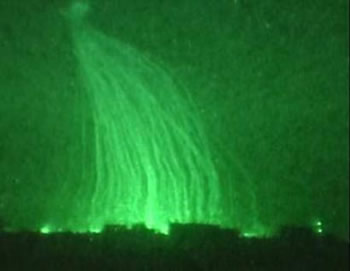
|
Shocking revelation RAI News 24. Use of chemical weapons by the US military in Iraq. Veteran admits: Bodies melted away before us.
White phosphorous used on the civilian populace: This is how the US "took" Fallujah.
New napalm formula also used.
ROME. In soldier slang they call it Willy Pete. The technical name is white phosphorus. In theory its purpose is to illumine enemy positions in the dark. In practice, it was used as a chemical weapon in the rebel stronghold of Fallujah. And it was used not only against enemy combatants and guerrillas, but again innocent civilians. The Americans are responsible for a massacre using unconventional weapons, the identical charge for which Saddam Hussein stands accused. An investigation by RAI News 24, the all-news Italian satellite television channel, has pulled the veil from one of the most carefully concealed mysteries from the front in the entire US military campaign in Iraq.
A US veteran of the Iraq war told RAI New correspondent Sigfrido Ranucci this: I received the order use caution because we had used white phosphorus on Fallujah. In military slag it is called 'Willy Pete'. Phosphorus burns the human body on contact--it even melts it right down to the bone.
RAI News 24's investigative story, Fallujah, The Concealed Massacre, will be broadcast tomorrow on RAI-3 and will contain not only eye-witness accounts by US military personnel but those from Fallujah residents. A rain of fire descended on the city. People who were exposed to those multicolored substance began to burn. We found people with bizarre wounds-their bodies burned but their clothes intact, relates Mohamad Tareq al-Deraji, a biologist and Fallujah resident.
I gathered accounts of the use of phosphorus and napalm from a few Fallujah refugees whom I met before being kidnapped, says Manifesto reporter Giuliana Sgrena, who was kidnapped in Fallujah last February, in a recorded interview. I wanted to get the story out, but my kidnappers would not permit it.
RAI News 24 will broadcast video and photographs taken in the Iraqi city during and after the November 2004 bombardment which prove that the US military, contrary to statements in a December 9 communiqué from the US Department of State, did not use phosphorus to illuminate enemy positions (which would have been legitimate) but instend dropped white phosphorus indiscriminately and in massive quantities on the city's neighborhoods.
In the investigative story, produced by Maurizio Torrealta, dramatic footage is shown revealing the effects of the bombardment on civilians, women and children, some of whom were surprised in their sleep.
The investigation will also broadcast documentary proof of the use in Iraq of a new napalm formula called MK77. The use of the incendiary substance on civilians is forbidden by a 1980 UN treaty. The use of chemical weapons is forbidden by a treaty which the US signed in 1997 - source
adnki.com
story in Italian via Republica
|
| White Phosphorus
The mission was to destroy forward Iraqi observation posts, dug-in Iraqi positions, and to neutralize Iraqi armor and artillery pieces. The 60mm mortar primary targets were personnel and light-skinned vehicles near the observation posts. The battalion 120mm mortar section and two 105mm howitzers were tasked to neutralize the enemy armor and artillery. The mounted rifle companies were tasked to provide route security, security of the firing elements at the firing points, quick reaction force (QRF) duties, and to emplace accurate fires onto the enemy using their vehicle-mounted 50-caliber machine guns and Mk-19 grenade launchers.
The 60mm mortars from Alpha Company, 1-508th Infantry, were tasked to provide immediate indirect fire support onto known and suspected targets. Upon reaching their planned mortar firing point, the section immediately dismounted their HMMWV (high-mobility multipurpose wheeled vehicle) and conducted an emergency occupation. The section immediately received a call for fire from their forward observers. Within 60 seconds of occupation, the section was placing accurate high explosive (HE) and white phosphorus (WP) rounds onto and in the vicinity of the Iraqi observations posts.
While conducting the fire mission, the Mk-19 and 50-caliber machine gunners opened fire in order to suppress Iraqis in the trench line and on a ridgeline to their front. The gunner's well-aimed suppressive fire enabled the mortar section to continue their mission.
The Iraqis responded with poorly aimed direct and indirect fires. The 105mm howitzers and 120mm mortars set up and were firing onto the artillery and tank positions. The 105mm howitzers fired more than 50 rounds from their two cannons in support of the operation. The 60mm mortar sections emplaced traversing fire onto the Iraqi trench line and observation posts. The Iraqis in one observation post attempted to flee but were fixed with white phosphorus fires. As they attempted to flee again, white phosphorus rounds impacted the vehicle and set it on fire. The section continued to fire a mix of high explosive and white phosphorus rounds into the objective area. The section fired more than 80 rounds in support of the mission. Upon receiving the order to displace and reorganize for the movement back to the battalion assembly area, the 105s, 120s and 60s quickly broke their systems down and moved out. The rifle companies continued to provide suppressive fire onto the objectives.
Upon reconsolidation of all elements, the task force moved back to the battalion assembly area. The total mission time for each raid was approximately 30 minutes.
The two raids were responsible for the neutralization of a Republican Guard Unit. Follow-on battle damage assessments reported that numerous fighting positions, equipment, and personnel were destroyed.
text file from this source
|
|
Daily Kos Blog entry: US Army Admits Use of White Phosphorus as Weapon Wed Nov 09, 2005 at 02:48:58 PM PDT
(From the diaries. Let's see them deny this shit now -- kos)
That's right. Not from Al Jazheera, or Al Arabiya, but the US fucking Army, in their very own publication, from the (WARNING: pdf file) March edition of Field Artillery Magazine in an article entitled "The Fight for Fallujah":
"WP [i.e., white phosphorus rounds] proved to be an effective and versatile munition. We used it for screening missions at two breeches and, later in the fight, as a potent psychological weapon against the insurgents in trench lines and spider holes when we could not get effects on them with HE. We fired 'shake and bake' missions at the insurgents, using WP to flush them out and HE to take them out."
|
:: :: In other words the claim by the US Government that White Phosphorus was used only for illumination at Fallujah had been pre-emptively debunked by the Army. Indeed, the article goes on to make clear that soldiers would have liked to have saved more WP rounds to use for "lethal missions."
However, as Mark Kraft, an emailer to Eric Alterman's blog, Altercation, points out today, the Field Artillery Magazine article fails to inform its audience that
. . . there is no way you can use white phosphorus like that without forming a deadly chemical cloud that kills everything within a tenth of a mile in all directions from where it hits. Obviously, the effect of such deadly clouds weren't just psychological in nature.
|
Furthermore, (from a link provided by Mr. Kraft, thank you very much) testimony about the use of these "shake and bake" techniques of WP usage are detailed in an account by an embedded Journalist regarding the April 2004 attacks on Fallujah by the Marines:
Fighting from a distance
After pounding parts of the city for days, many Marines say the recent combat escalated into more than they had planned for, but not more than they could handle.
"It's a war," said Cpl. Nicholas Bogert, 22, of Morris, N.Y.
Bogert is a mortar team leader who directed his men to fire round after round of high explosives and white phosphorus charges into the city Friday and Saturday, never knowing what the targets were or what damage the resulting explosions caused.
"We had all this SASO (security and stabilization operations) training back home," he said. "And then this turns into a real goddamned war."
Just as his team started to eat a breakfast of packaged rations Saturday, Bogert got a fire mission over the radio.
"Stand by!" he yelled, sending Lance Cpls. Jonathan Alexander and Jonathan Millikin scrambling to their feet.
Shake 'n' bake
Joking and rousting each other like boys just seconds before, the men were instantly all business. With fellow Marines between them and their targets, a lot was at stake.
Bogert received coordinates of the target, plotted them on a map and called out the settings for the gun they call "Sarah Lee."
Millikin, 21, from Reno, Nev., and Alexander, 23, from Wetumpka, Ala., quickly made the adjustments. They are good at what they do.
"Gun up!" Millikin yelled when they finished a few seconds later, grabbing a white phosphorus round from a nearby ammo can and holding it over the tube.
"Fire!" Bogert yelled, as Millikin dropped it.
The boom kicked dust around the pit as they ran through the drill again and again, sending a mixture of burning white phosphorus and high explosives they call "shake 'n' bake" into a cluster of buildings where insurgents have been spotted all week.
They say they have never seen what they've hit, nor did they talk about it as they dusted off their breakfast and continued their hilarious routine of personal insults and name-calling.
|
So who you gonna believe? The US Department of Defense or the US Army and the US Marine Corps? Decisions, decisions . . .
|
|
|
A car carrying a former hostage, Italian journalist Giuliana Sgrena, and Italian intelligence officials, was driving to the Baghdad Airport when U.S. forces fired on the car, killing an intelligence agent, and wounding Sqrena.
Berlusconi was quick to vent his fury. 'Given that the fire came from an American source I called in the American ambassador,' - BNN
Berlusconi is a LIAR - Italy involved in 'Rendition Progam'
|
|
|
A Documentary, aired by Italian TV contains footage shows Giuliana Sgrena revealing that
she was reporting on the use of chemical weapons in Fallujah before she was Kidnapped by so-called insurgants: Further: she was told by her kidnappers that she should not discuss these issues when released
|
strange then, that Peter Popham makes
no mention of this in the UK Independant Newspaper
|
US forces 'used chemical weapons' during assault on city of Fallujah
By Peter Popham - Published: 08 November 2005
Powerful new evidence emerged yesterday that the United States dropped massive quantities of white phosphorus on the Iraqi city of Fallujah during the attack on the city in November 2004, killing insurgents and civilians with the appalling burns that are the signature of this weapon.
Ever since the assault, which went unreported by any Western journalists, rumours have swirled that the Americans used chemical weapons on the city.
On 10 November last year, the Islam Online website wrote: "US troops are reportedly using chemical weapons and poisonous gas in its large-scale offensive on the Iraqi resistance bastion of Fallujah, a grim reminder of Saddam Hussein's alleged gassing of the Kurds in 1988."
The website quoted insurgent sources as saying: "The US occupation troops are gassing resistance fighters and confronting them with internationally banned chemical weapons."
In December the US government formally denied the reports, describing them as "widespread myths". "Some news accounts have claimed that US forces have used 'outlawed' phosphorus shells in Fallujah," the USinfo website said. "Phosphorus shells are not outlawed. US forces have used them very sparingly in Fallujah, for illumination purposes.
"They were fired into the air to illuminate enemy positions at night, not at enemy fighters."
But now new information has surfaced, including hideous photographs and videos and interviews with American soldiers who took part in the Fallujah attack, which provides graphic proof that phosphorus shells were widely deployed in the city as a weapon.
In a documentary to be broadcast by RAI, the Italian state broadcaster, this morning, a former American soldier who fought at Fallujah says: "I heard the order to pay attention because they were going to use white phosphorus on Fallujah. In military jargon it's known as Willy Pete.
"Phosphorus burns bodies, in fact it melts the flesh all the way down to the bone ... I saw the burned bodies of women and children. Phosphorus explodes and forms a cloud. Anyone within a radius of 150 metres is done for."
Photographs on the website of RaiTG24, the broadcaster's 24-hours news channel, www.rainews24.it, show exactly what the former soldier means. Provided by the Studies Centre of Human Rights in Fallujah, dozens of high-quality, colour close-ups show bodies of Fallujah residents, some still in their beds, whose clothes remain largely intact but whose skin has been dissolved or caramelised or turned the consistency of leather by the shells.
A biologist in Fallujah, Mohamad Tareq, interviewed for the film, says: "A rain of fire fell on the city, the people struck by this multi-coloured substance started to burn, we found people dead with strange wounds, the bodies burned but the clothes intact."
The documentary, entitled Fallujah: the Hidden Massacre, also provides what it claims is clinching evidence that incendiary bombs known as Mark 77, a new, improved form of napalm, was used in the attack on Fallujah, in breach of the UN Convention on Certain Conventional Weapons of 1980, which only allows its use against military targets.
Meanwhile, five US soldiers from the elite 75th Ranger Regiment have been charged with kicking and punching detainees in Iraq.
The news came as a suicide car bomber killed four American soldiers at a checkpoint south of Baghdad yesterday. - independent.co.uk
|
WP is a chemical weapon
|
US intelligence classified white phosphorus as 'chemical weapon'
By Peter Popham and Anne Penketh - 23 November 2005
The Italian journalist who launched the controversy over the American use of white phosphorus (WP) as a weapon of war in the Fallujah siege has accused the Americans of hypocrisy. Sigfrido Ranucci, who made the documentary for the RAI television channel aired two weeks ago, said that a US intelligence assessment had characterised WP after the first Gulf War as a "chemical weapon".
The assessment was published in a declassified report on the American Department of Defence website. The file was headed: "Possible use of phosphorous chemical weapons by Iraq in Kurdish areas along the Iraqi-Turkish-Iranian borders."
In late February 1991, an intelligence source reported, during the Iraqi crackdown on the Kurdish uprising that followed the coalition victory against Iraq, "Iraqi forces loyal to President Saddam may have possibly used white phosphorous chemical weapons against Kurdish rebels and the populace in Erbil and Dohuk. The WP chemical was delivered by artillery rounds and helicopter gunships."
According to the intelligence report, the "reports of possible WP chemical weapon attacks spread quickly among the populace in Erbil and Dohuk. As a result, hundreds of thousands of Kurds fled from these two areas" across the border into Turkey.
"When Saddam used WP it was a chemical weapon," said Mr Ranucci, "but when the Americans use it, it's a conventional weapon. The injuries it inflicts, however, are just as terrible however you describe it."
In the television documentary, eyewitnesses inside Fallujah during the bombardment in November last year described the terror and agony suffered by victims of the shells . Two former American soldiers who fought at Fallujah told how they had been ordered to prepare for the use of the weapons. The film and still photographs posted on the website of the channel that made the film - rainews24.it - show the strange corpses found after the city's destruction, many with their skin apparently melted or caramelised so their features were indistinguishable. Mr Ranucci said he had seen photographs of "more than 100" of what he described as "anomalous corpses" in the city.
The US State Department and the Pentagon have shifted their position repeatedly in the aftermath of the film's showing. After initially saying that US forces do not use white phosphorus as a weapon, the Pentagon now says that WP had been used against insurgents in Fallujah. The use of WP against civilians as a weapon is prohibited. Military analysts said that there remain questions about the official US position regarding its observance of the 1980 conventional weapons treaty which governs the use of WP as an incendiary weapon and sets out clear guidelines about the protection of civilians.
Daryl Kimball, director of the Arms Control Association in Washington, called for an independent investigation of the use of WP during the Fallujah siege. "If it was used as an incendiary weapon, clear restrictions apply," he said. "Given that the US and UK went into Iraq on the ground that Saddam Hussein had used chemical weapons against his own people, we need to make sure that we are not violating the laws that we have subscribed to," he added.
Yesterday Adam Mynott, a BBC correspondent in Nassiriya in April 2003, told Rai News 24 that he had seen WP apparently used as a weapon against insurgents in that city. - independent
|
|
